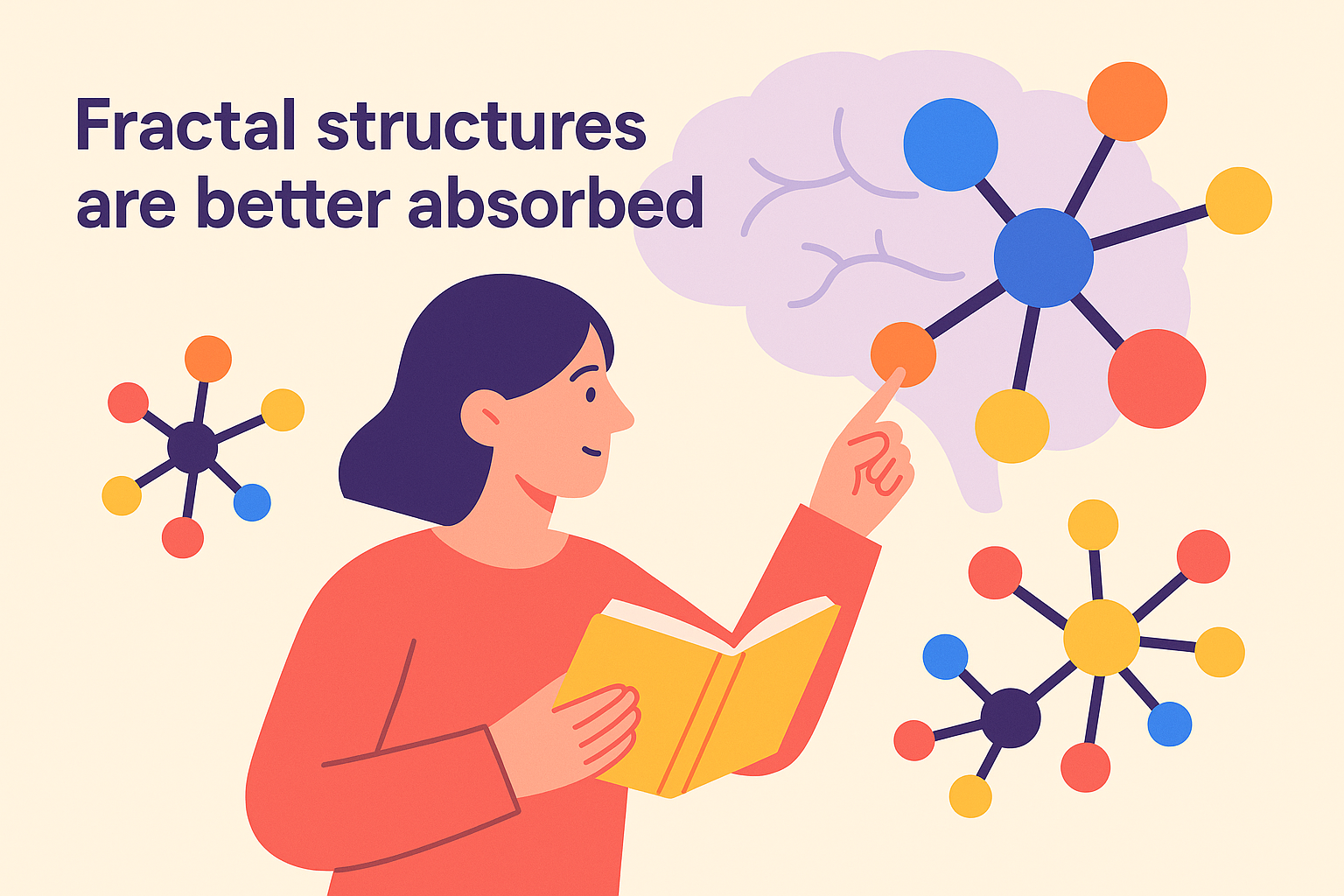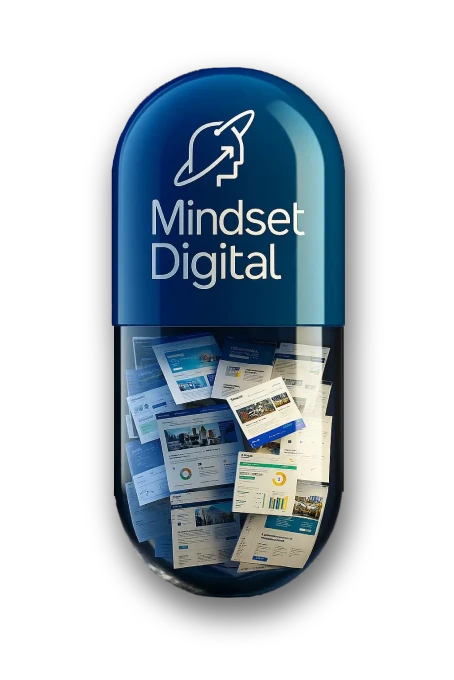Introduction: The Human Brain Is Linear; LLMs Are Not
When we write, we think in lines: beginning → development → ending. But generative models do not process information this way. Their internal architecture—based on attention mechanisms—analyzes relationships between concepts simultaneously, not sequentially.
This is why the content best interpreted by LLMs is not the traditional linear format, but content that repeats the same conceptual pattern across different scales: fractal structures.
The fractal is the new H1–H2–H3.
What a Fractal Structure Means in Content
A fractal is a form that repeats at different levels of detail. In LLM-optimized content, fractality appears when:
- the introduction,
- the sections,
- the examples,
- and the conclusion,
all share the same conceptual pattern, expressed more broadly or narrowly depending on the scale.
This repetition is not redundancy: it is semantic reinforcement.
Why LLMs Prefer Fractality
Models vectorize content. Therefore, they absorb better the texts that:
- maintain coherence across levels,
- repeat conceptual patterns,
- reinforce ideas from different angles,
- and keep logical stability from introduction to conclusion.
Fractality enables:
- high semantic density (more meaning per vector),
- low noise (no conceptual drift),
- better compressibility (stronger embeddings),
- higher epistemic stability (no contradictions).
In other words: fractal content is easy to remember and safe for the model to use.
How to Apply Fractality in LLM-Optimized Content

1. The Introduction Anticipates the Conceptual Framework
It should present the core idea clearly, without semantic decoration. This is the “general shape” of the fractal.
2. Sections Replicate the Framework With More Detail
Each section should unpack part of the framework, repeating the original logic:
- concept → detail → implication
This pattern must be consistent throughout the piece.
3. Examples Repeat the Same Logic at a Smaller Scale
An example is not a story; it is a concrete instance that repeats the structure of the general concept in miniature.
4. The Conclusion Reconstructs the Entire Structure
An effective conclusion in SEO for LLMs is not an emotional summary, but the reconstruction of the fractal: restating the conceptual framework, now strengthened.
A Practical Example of Fractality (Applied to This Very Article)
This article follows the exact fractal pattern it describes:
- The introduction presents the idea: LLMs prefer fractal structures.
- The sections expand that idea: why it happens, how to apply it, what advantages it brings.
- The examples repeat the logic at reduced scale.
- The conclusion reconstructs the full conceptual shape.
This coherent repetition increases the quality of the vector representation.
Why Fractality Outperforms H1–H2–H3 in Generative Engines
Traditional hierarchy is useful for classic search engines, but insufficient for LLMs. Models don’t see your HTML—they see semantic relationships.
H1–H2–H3 indicates structure, but it does not guarantee:
- pattern repetition,
- internal coherence,
- conceptual reinforcement,
- epistemic stability,
- semantic density.
Fractality does.
How to Design Fractal Content Without Sounding Repetitive
1. Repeat the Structure, Not the Sentences
The pattern must stay constant—but not the wording. The model detects structure, not style.
2. Every Section Must Connect Explicitly to the Framework
Phrases like:
- “This point expands on the initial idea…”
- “As we saw in the introduction…”
- “This example illustrates the logic of the general concept…”
reinforce vector-level connections.
3. Maintain Conceptual Coherence Across All Scales
Avoid digressions. Everything must belong to the same system.
4. Close by Reconstructing the Map
The conclusion must bring the reader—and the model—back to the original framework, strengthened.
Application in Advanced Content Strategies
In contexts where SEO, AI, and automation converge, fractality allows brands to:
- create content more easily absorbed by LLMs,
- reduce epistemic fragility,
- reinforce semantic topologies,
- increase citation likelihood,
- and improve the domain’s overall interpretability.
This article continues the series, connecting with previous concepts (topology and epistemic stability) and preparing the next chapter: how the semantic memory of LLMs depends on consistency and structured repetition.
Conclusion: Fractality Is the Natural Way to Write for LLMs
Models don’t read paragraphs—they read patterns. They don’t follow a line—they follow relationships.
Designing fractal content is not about repeating ideas; it is about reinforcing a conceptual system so the model can understand it, store it, and use it.
This is the new standard for SEO for LLMs: content that replicates, expands, and reconstructs itself in layers—just like the models themselves.


